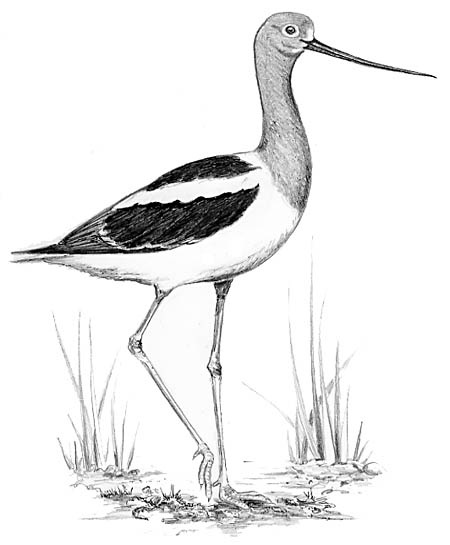
Dear Bird Folks,
I really don’t have a question, I’m just writing to tell you about a life bird that I saw thanks to your store not being open. On my way back to New Jersey last Sunday I stopped at your shop, but you hadn’t opened it yet. So, instead of waiting I did a little birding and I’m glad I did. At the end of some road in Orleans I spotted my first American Avocet. What a thrill. It made my entire trip. Thank you so much for not being open.
– Gina, Morristown, NJ
Yea, Gina,
I’m glad you got to see a life bird. However, you should know that I was birding too. Instead of getting to work on time I was checking out a beautiful toucan. It was right on the cover of the box of Fruit Loops that I was having for breakfast. I’m pretty sure that counts as bird watching. At least that’s what I tell the IRS when I send in my cereal receipts each year.
When I finally got to work on the Sunday in question, I found that my friend, Kathy McGinley, had already left a very excited message on my answering machine telling me about the very same bird. Both you and Kathy should be excited; the American Avocet is a rare bird on Cape Cod, and in most of the Northeast. But unlike many rare birds that visit our area, this bird is actually identifiable. It is handsome, well marked, and a treat for anyone who sees one, even if it means missing the opening of my shop. Just don’t do it again.
If the American Avocet were human it would be a supermodel. It has long, lanky legs that go on forever. Its body is shapely and perfectly proportioned, while the neck is elegant and inviting. The lengthy bill is long, thin and dainty, and the bird’s breeding colors are striking without being cheap or gaudy. (I’m talking to you peacocks) The avocet is definitely one bird that other birds would be jealous of, if birds wasted their time on such things.
The avocet isn’t a perfect date, however. Apparently, it spent so much time making itself look good that it didn’t bother learning any proper table manners. When the bird is hungry it leans its elegant body forward, dips its dainty bill into the water and begins thrashing its bill back and forth, over and over, looking like one of my kids eating an ear of corn. By constantly sweeping its bill through the water, and along the bottom, the bird is able to snap up small aquatic creatures that it feels with its supersensitive bill.
Another unattractive thing about this very attractive bird is its voice. Avocets have a piercing, high-pitched call that sounds like a combination of Tiny Tim and that grating Karen woman on TV’s Will and Grace. As you might expect, avocets use their call to communicate with each other, but they also use it to fool predators. By varying the intensity of their aggression calls, would-be predators are unable to judge the bird’s actual distance. This is especially true when avocets are on the attack. This pretty bird, with the skinny legs, is extremely aggressive in defense of its young. When a predator approaches the nest the avocets sometimes only scream a warning, and sometimes fake a broken wing, but usually they say, “bring it on.” More than one predator has been whacked with the full force a fast flying supermodel.
During the winter the best place to see avocets is along the southern coast of the U.S. In the spring they migrate to our central western states to breed. After enduring a rather colorful courtship the female lays the eggs and then both adults take turns incubating. However, on the sizzling western nesting grounds the term “incubating” takes on a different meaning. Often the parents’ most important job is to keep the eggs from overheating. The adults not only provide shade from the blazing sun but they occasionally fly off, soak their breast feathers in water and return to cool the eggs with a summertime sponge bath.
Once was a time when avocets nested in many Eastern states as well, but, stop me if you’ve heard this before, over-hunting took care of the eastern population. Audubon once wrote a beautiful description of an avocet colony nesting along a lake in Indiana. After he finished writing he put his pencil down, picked up his gun and finished off the entire colony. Good old John James.
In recent years there have been more and more sightings of avocets in the Northeast. It is hoped that this is a sign that the birds may be returning to their former breeding grounds. How cool would that be? In the meantime we have to be contented with the occasional serendipitous sighting.
I’m glad you were able to see a life bird, Gina. An American Avocet is a bird that all of us should see at least once, and hopefully more than once. Just don’t make a habit of leaving my shop before we open. There are enough names on the Endangered Species List. I don’t want mine on there, too.